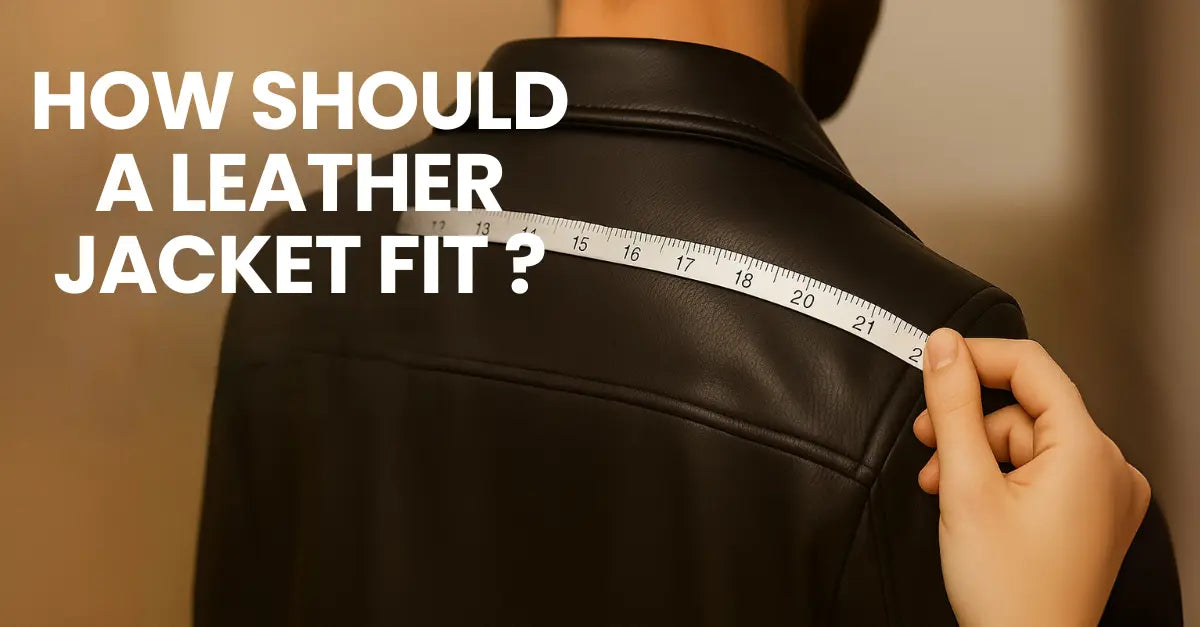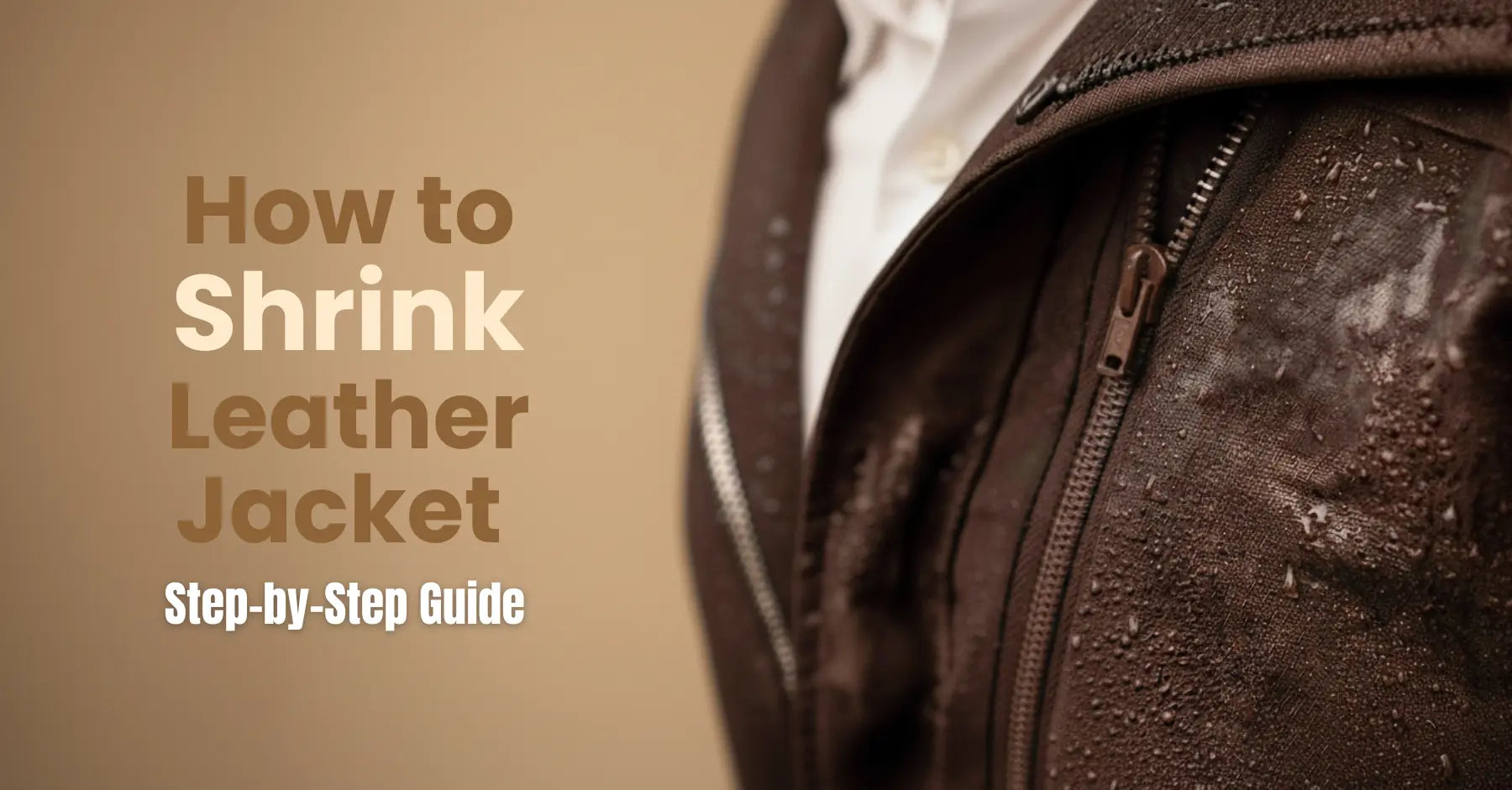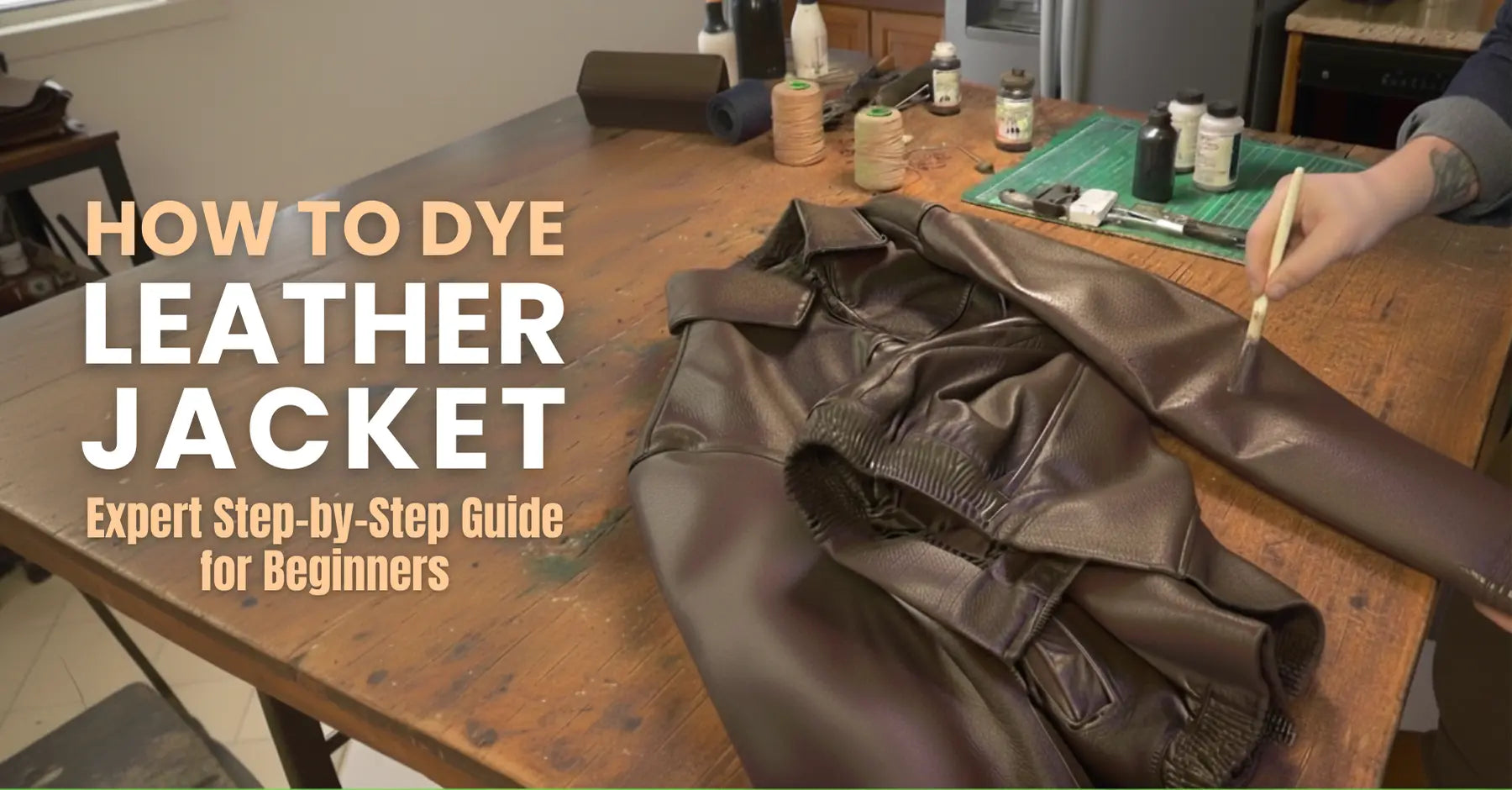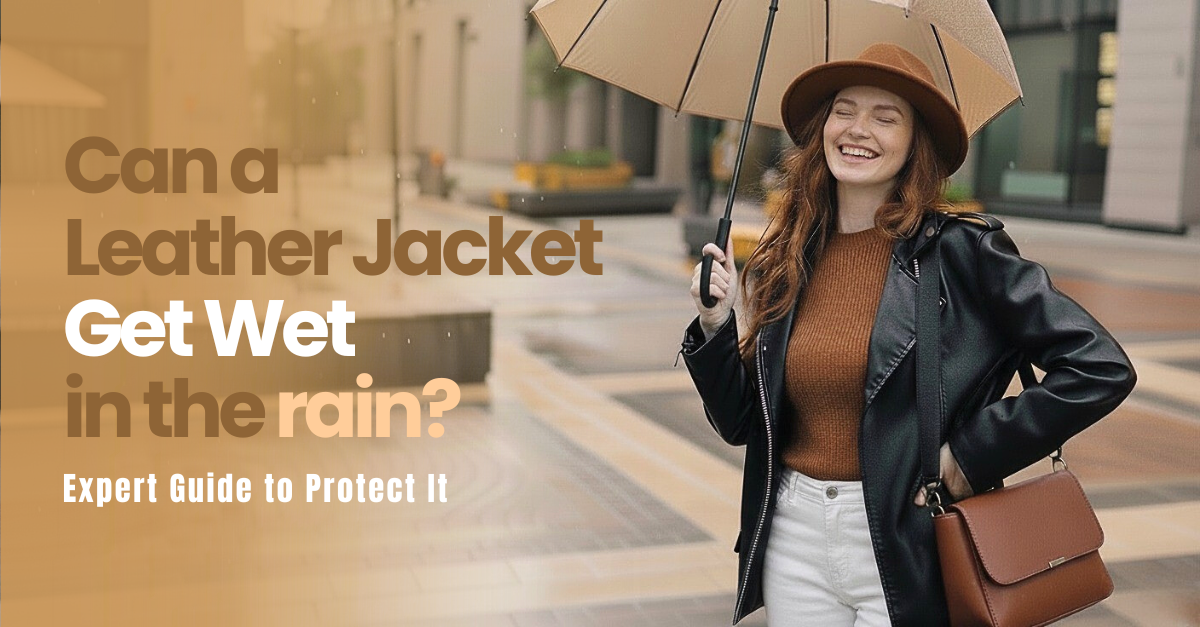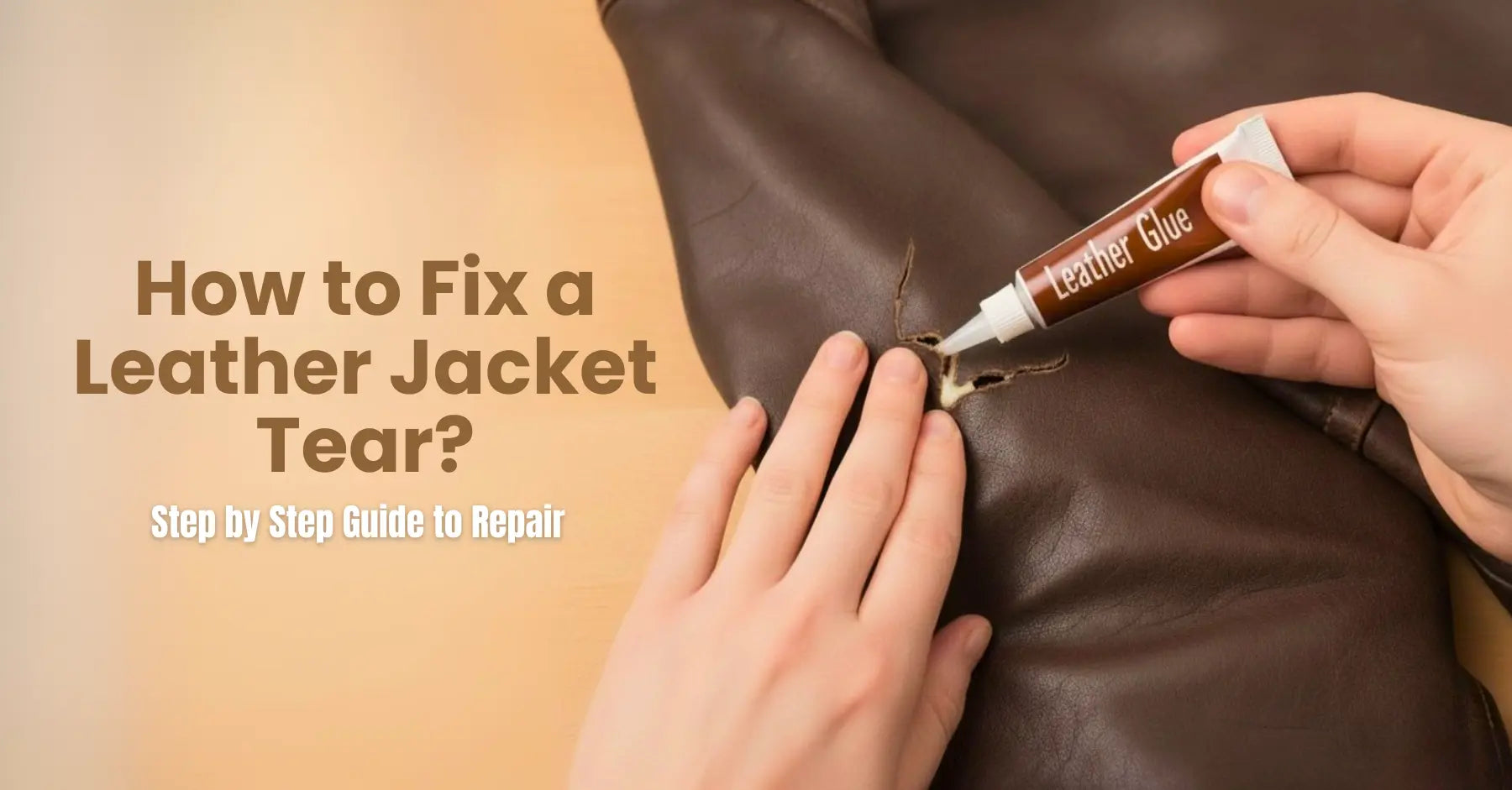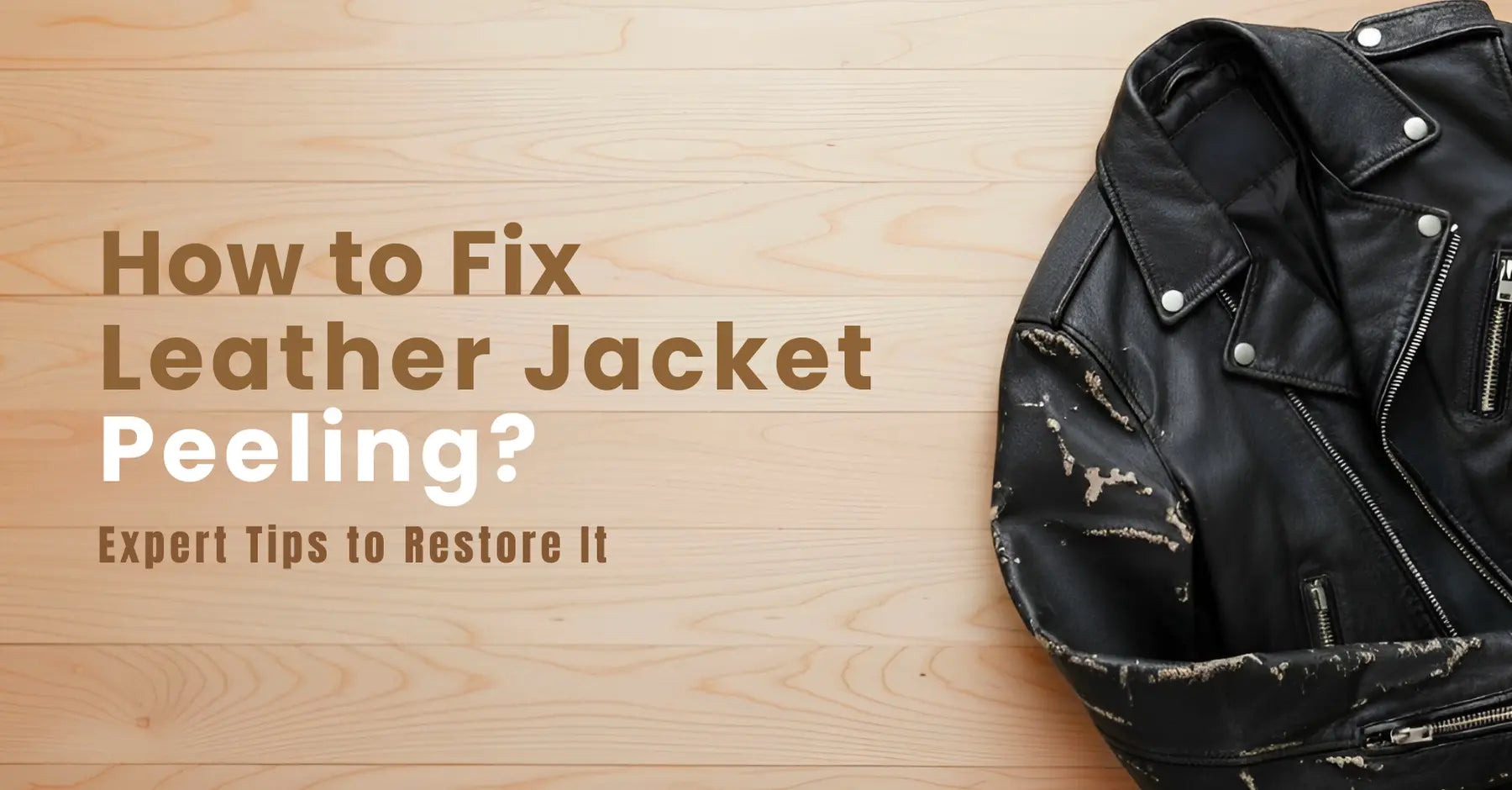
Choosing the right fit isn’t just about appearances; it's about performance. Since leather naturally molds to your body over time, opting for a slightly snug fit is usually the wiser choice. Size up too much, and the jacket starts to look oversized and sloppy; size down too far, and you sacrifice essential mobility.
The ideal fit ensures the shoulders align perfectly, the sleeves land right at the wrist, and there’s just enough space to layer without adding bulk. When you get the fit right, your jacket doesn’t just complement your look, it becomes a long-lasting part of your style.
What’s the Correct Fit for a Leather Jacket?
Finding the right fit can be challenging due to various factors, including design choices, body types, personal tastes, and the unique approaches each manufacturer takes to creating their jacket styles. Based on my experience with classic jackets, I’ve seen how the intended fit can vary a lot with trends over time.
What was the correct fit decades ago may not be now. That’s why you shouldn’t rely on a standard size alone when trying on jackets. Use a tape measure to measure your chest and width to get a precise measurement, especially when choosing a men’s leather jacket.
Sizing varies across brands because each uses its own chart and fit style, some made for layering, others cut tighter. Always check the sizing guide before buying. Sizing isn’t a fixed formula; it’s about finding what feels right for you. The perfect fit comes down to both comfort and confidence.
Are Leather Jackets Supposed to Be Tight?
When you first try on a new leather jacket, it might feel a bit close-fitting or even slightly tight, but that’s a sign of a good fit. From what I’ve seen firsthand with top-tier jackets, especially the ones made from vegetable-tanned leather, they start pretty stiff.
You put one on and think, Is this thing supposed to feel this tough? But give it time. As you wear it, your body heat and movement start doing the magic. The leather softens, loosens up, and slowly molds to your shape, like it’s learning how to fit you.
Over time, it becomes incredibly natural and comfortable, adapting to your body effortlessly, kind of like how a solid pair of leather boots breaks in and becomes your go-to. A great fit doesn’t choke you, it hugs your frame just right while letting the leather evolve into something completely yours.
Should I Get a Made-to-Measure Jacket?
A made-to-measure leather jacket is a lifetime investment. A perfectly fitted jacket should be handcrafted to your exact measurements, not mass-produced. With custom style and length options, it’s built to match your look and fit right from day one. Some brands offer minor alterations so it wears well and lasts for decades.
Key Fit Points to Assess:
Proper fit depends on key areas like the shoulders, sleeves, chest, and waist. Assessing these specific areas is essential to achieving a seamless blend of style, comfort, and functionality.

-
Shoulders:
When trying on these jackets, the usual suit coat rules don’t apply. It’s fine if the shoulder seam drops a few inches down your arm, as leather adjusts over time. But if the shoulder seam sits above your natural shoulders, the jacket is too small.
-
Chest:
A leather jacket should fit more snugly around the chest than a regular overcoat. Even if you plan to wear layers underneath, you should be able to zip or button it up comfortably. Make sure it looks good both open and closed, giving you a sleek yet functional style.
-
Waist:
A good leather jacket should feel like it was made just for you. It should gently follow the shape of your body, not too tight, not too loose. The shoulders need to sit just right, and the chest should feel easy, not baggy, but not squeezing you either. Around the waist, it should give you shape, maybe even come with a belt to adjust it your way. It’s all about feeling confident and looking sharp, without trying too hard.
-
Sleeve Length
When it comes to sleeve length, your leather jacket should hit right at the wrist no higher, no lower. If it’s too short, your shirt sleeves start peeking out, which just looks off. Too long, and it gives that awkward hand-me-down vibe, like it was made for someone else. Ensure the length complements your fit for a sharp look.
-
Hem Length:
Your leather jacket should stop right around your belt or slightly higher, just brushing the top of your thighs. Any lower, and it starts drifting into awkward territory, like you’re wearing someone else’s coat. You don’t want it swallowing your frame or hanging like a trench. The right length just feels right, clean, sharp, and balanced. Not tight, not sloppy. Just... effortless.
Measuring and Trying on for Fit:
Trying on leather jackets in person? That’s the sweet spot where you can mess around with sizes, test different cuts, and feel what fits you. But if you’re shopping online (which most of us do), your measurements become everything. Just make sure they’re done right, one wrong number, and the fit’s off, and that perfect jacket ends up feeling all wrong. Keep in mind that measurements are only helpful if done right for jacket sizing.
Measuring
Grab a soft measuring tape and take a few quick body measurements—your chest, waist, and arms. It’s the easiest way to avoid guesswork.

Use a Cloth or Paper Measuring Tape:
To achieve the ideal fit, use a cloth or paper measuring tape for accurate body measurements.. Avoid metal tape measures as they’re for flat surfaces. Don’t let the tape hang loose or pull it too tight, just make sure it's comfortably fitting.
Measure the Chest:
A good leather jacket should have a tailored feel in the chest, secure, but never restrictive. To get the right measurement, use a measuring tape and wrap it around the fullest part of your chest, keeping it level for accuracy. Make sure the tape goes under your armpits, across your shoulder blades, and back to the front. This gives you the correct circumference. From my experience, skipping this step often leads to jackets that are either too restrictive or uncomfortably loose.
Measure the Waist:
Find your natural waistline (above belly button, below rib cage) - bend to spot the crease. Wrap a measuring tape around this circumference, keeping it level. Don't suck in or measure below - this common mistake leads to poor fits.
Measure the Sleeve Length:
To measure sleeve length accurately, place the tape at the base of your neck (center back), stretch it over your shoulder, and down to your wrist. This entire length ensures a perfect fit. Since it’s tough to do alone, ask for help to avoid errors. A proper measurement includes more than just your arm, so precision is key.
Trying On & Assessing Fit
Put the jacket on and move around, check how it feels across your shoulders, with layers underneath, and when zipped up.

Try It On:
Try the jacket when purchasing, move your arms, bend your elbows, and see how it feels. It should allow comfortable movement without being too loose. A perfect fit balances style and ease. If you can’t move freely, it’s not right.
Consider Layers:
When trying on a jacket, always wear your usual shirt or layers to gauge the fit properly. A well-fitted leather jacket should leave enough room for additional layers like sweaters or hoodies underneath without feeling too tight.
From my experience, skipping this step can lead to surprises later, like a jacket that suddenly feels restrictive when layered. Sticking to familiar clothing helps ensure the jacket complements your wardrobe effortlessly.
Check Shoulder and Arms Fit:
Shoulder seams must sit at your natural shoulder line for a balanced look, while sleeves should fall precisely at the wrist bone when arms are relaxed - this proper fit ensures coverage without excess fabric, creating a polished appearance and lasting comfort.
Test Range of Motion:
Alright, here's the thing: your jacket might look sharp in the mirror, but if you can't move in it, what's the point? Try bending your elbows, swinging your arms around, and even reaching up like you're grabbing something off the top shelf.
If it feels tight in the shoulders or across the chest, trust me, it’s not the one. I’ve learned this the hard way, owned jackets that looked killer but felt like a straitjacket after an hour. Comfort and movement? Non-negotiable. Always do a little stretch test before sealing the deal.
Assess Comfort When Zipped or Buttoned:
A perfect jacket feels comfortable when zipped or buttoned, with enough room in the chest and waist for easy movement, no tightness or restricted discomfort. Always evaluate the fit closely to prevent fit issues, ensuring freedom without bulk.
Allow for a Slight Break-In Period:
A perfect leather jacket should feel snug but not overly tight, allowing room for the leather to soften and mold to your body over time. Initially, aim for a comfortable fit. This ensures the jacket adapts without compromising comfort and only gets better with wear. The right fit strikes a balance: structured yet flexible, so it looks sharp now and feels even more personalized later.
Final Tips & Adjustments
Leather shapes to you over time, so give it a little break-in. And if it’s close but not perfect, small tailoring tweaks can make all the difference.
Tips for Finding the Right Fit:
-
Examine online reviews and ask friends/family for advice to find the right fit for your leather jacket. Proper sizing is key.
-
Choose a skilled tailor with expertise in leather to make necessary adjustments, and discuss changes to guarantee a good fit.
-
Always schedule a fitting to ensure your jacket fits perfectly, comfortably yet sharp, like a second skin.
Changes That May Be Made Include:
-
A leather jacket should fit snugly at the shoulders with sleeves ending at your wrist; you can shorten or lengthen them if needed.
-
The waist size should feel just right; if too tight or loose, you can increase or decrease it for comfort.
-
The collar must sit properly, not too high or floppy, and can be adjusted.
-
Jackets can adapt slightly with wear, but the initial fit matters for long-term style.
Leather Jacket Styles and Fit Differences:
A well-fitted leather jacket should feel snug but not restrictive across the chest and shoulders. Should leather jackets be tight or loose? The right leather jacket style varies based on personal preference, offering different fits and functions to suit your needs. Avoid extremes - too tight restricts movement, while too loose looks sloppy.
-
Leather Jacket Styles and How They Affect Fit:
Choosing the right leather jacket depends on your fit preferences and functional needs. Whether opting for classic bikers or refined bombers, each jacket style influences mobility, comfort, and aesthetics. Jacket selection should align with your body shape, offering the perfect balance between style and mobility fit, while leather selection impacts the overall fit.
-
The Classic Biker Jacket:
A biker jacket brings an edgy, rebellious vibe with its snug fit and asymmetrical zippers. Often adorned with studs and belt buckles, this jacket adds a rock 'n' roll touch to any outfit. It's the perfect style for those who love bold details and want to stand out.
-
The Bomber Jacket:
Bomber jackets offer a relaxed, looser fit with a zipper front and elastic cuffs for comfort and movement. The ribbed hems and waistband ensure a structured, casual look, perfect for various body types. It combines style, warmth, and a polished appearance.

-
The Moto Jacket:
A moto jacket is designed to be streamlined, offering a sleek and modern look with minimal embellishments. Unlike biker jackets, it’s more versatile and can easily pair with both casual outfits and dressy outfits. It provides a sharp, stylish look while maintaining comfort and functionality.

-
The Trench Coat:
When choosing a leather jacket, the fit should be cosy yet comfortable, ensuring the ideal shape. For trench coats, they should fall longer, either mid-thigh or below the knee, offering a sophisticated and polished look. The belt allows you to cinch the waist, creating a flattering, elegant silhouette. This adds style and comfort, giving you the perfect look.

-
Cafe Racer Jackets:
A Cafe Racer jacket offers a body-hugging, close fit that follows your contours and curves for a sleek, streamlined look. With a minimalist design and no embellishments, it provides a refined, tailored fit on the shoulders and chest. The zipper lies smoothly, ensuring a clean, modern finish with comfort, flexibility, and no bulk, all while maintaining sleekness and precision.
-
Flight Jackets:
A flight jacket should have a roomier, generous fit to allow layering in colder weather, with extra space in the torso for bulkier builds. The slightly longer length provides better coverage and warmth while keeping its classic, rugged appeal. It should balance style and function, tight enough to look sharp but loose enough to move freely.
-
Field Jackets:
Field jackets offer a looser fit with multiple pockets for utility, blending style and function. Their longer length extending below the hip lets them layer comfortably over thicker clothing, perfect for outdoor activities. The designed cut ensures mobility while keeping a functional, rustic look that enhances any wearer’s wardrobe.
-
What Style Should You Choose for Your Leather Jacket?
The perfect leather jacket depends on your body shape and preferred fit. Bomber jackets suit wider midsections, while moto and racer styles complement smaller frames. Vintage and biker jackets vary in cut and proportions, so try multiple options. Focus on how the design fits your shoulders, chest, and arms; these areas determine comfort and style.
Choosing the Right Style for Your Body:
Your perfect leather jacket should feel like it was made just for you. It’s all about finding that balance between comfort and style. If you’ve got a lean frame, a slim cut will highlight your build nicely. For broader shoulders or a more solid build, go for structured styles that add shape without bulk. The right fit should flatter your proportions too tight and it’ll feel restrictive, and you’ll lose that sharp look. This guide is here to help you find a fit that truly works for you.
-
Athletic Build:
For an athletic build with broader shoulders and a narrower waist, choose jackets that taper slightly at the waist to highlight your natural shape. Opt for styles like the cafe racer or fitted biker jacket; they work well for a streamlined look without adding bulk. Avoid overly loose fits that obscure your definition or disrupt the jacket’s silhouette. A proper fit enhances proportions while maintaining mobility.

-
Slim Build:
For a slimmer build, choose jackets with a slightly relaxed or straight fit to add dimension without overwhelming your frame. Bomber and flight jackets are ideal - their structure creates volume around the chest and shoulders for perfect balance. These styles deliver a classic look while avoiding an oversized appearance.

-
Broad or Stocky Build:
For broader or stockier builds, choose jackets with enough room in the chest and waist, like bomber jackets, to ensure comfort and mobility. Avoid tight cuts that accentuate bulk or feel restrictive; instead, pick styles with space for natural movement, especially in active fieldwork. A good leather jacket should move with you.
-
Tall Build:
For taller people, opt for slightly longer jacket styles like Field or flight jackets; their extended lengths provide balance to your height. A structured fit creates proportion, offering a balanced look from top to bottom. Avoid cropped styles; they throw off proportions and create a top-heavy appearance. These great choices ensure you look sharp while maximizing comfort.
Material and Craftsmanship That Impacts Fit:
Quality is essential for leather jackets. A well-crafted jacket not only looks superior but also stands the test of time, developing a rich patina with age.
-
Types of Leather:
When it comes to material, full-grain leather ranks highest in quality and durability, aging beautifully over time. Top-grain leather also offers excellent quality with a softer, more refined feel, though it's slightly less durable due to surface treatments. Budget-friendly leather is the most cost-effective option, but it lacks the strength, character, and long-term durability found in premium grades.

-
Lining and Stitching:
A great jacket needs a smooth, comfortable lining that moves with you, never stiff or bulky. Check that the stitching is even and strong to hold up over time; sloppy or tight stitching weakens durability. A high-quality leather jacket is balanced for a perfect fit.
-
Hardware:
A perfect fit relies on sturdy zippers and buttons; they must be functional and high-quality to ensure durability without sacrificing aesthetics. Flimsy hardware ruins both comfort and style.
-
What Are the Key Features to Look For in a Leather Jacket?
A well-fitted leather jacket should have shoulder seams that sit properly in line with your shoulders, sleeves that terminate at the wrist bone, and a close fit around the chest and waist without restricting movement. When trying it on, ensure it rests comfortably while zipping, lift your arms to check for restrictions, and confirm the jacket moves naturally with your body.
Styling, Maintenance, and Final Thoughts:
A leather jacket brings effortless style to your everyday look. Check out these styling tips to get the most out of yours.
-
Casual Look:
A well-fitted leather jacket creates the perfect casual look when paired with a t-shirt, jeans, and either sneakers or boots. This classic, effortless outfit works for any outing while keeping your style sharp.

-
Dressy Look:
Pair your leather jacket with a dress or skirt for sophistication, heels add elegant polish, while ankle boots bring an edgy contrast. The right fit sharpens all styles, balancing structure with attitude.
-
Layering:
The key to a perfect leather jacket fit is balancing layering options, close-fitting, yet comfortable. In colder weather, pair it with a sweater or hoodie; for warmer months, opt for a light blouse or t-shirt. A good jacket adapts across seasons without losing its shape.
-
Cleaning:
For general cleaning, check the manufacturer’s care instructions first. Use a damp cloth to gently wipe off dirt and dust; never use harsh chemicals or soak the leather, as that can cause lasting damage. If you want a deeper look at proper care methods, here’s a complete guide on how to care for a leather jacket to help keep yours in top shape.
-
Conditioning:
To keep your leather jacket soft and supple, condition it regularly with a high-quality leather conditioner. This prevents the material from becoming dry and stiff. Apply the product evenly using a clean cloth, let it absorb, then gently buff. Over time, this routine becomes important for maintaining durability and comfort.
-
Storage:
To maintain your leather jacket's shape, store it in a cool, dry place. Always use a padded hanger to prevent creases and avoid hanging it in direct sunlight or near heat sources, which can damage the material.
Final Thoughts:
A well-fitted leather jacket should hug your shoulders, sit flush at the chest, and taper at the waist for a flattering shape too tight to restrict movement nor too loose to lose its effortlessly classic look. The sleeves should hit just above the wrist, ensuring comfort and versatility for any occasion, blending form and function perfectly. Finding the right fit enhances your style and confidence, making it a timeless wardrobe staple that elevates every outfit.
To preserve your jacket, store it on a padded hanger in a cool, dry place, away from direct sunlight and heat sources to prevent creases and damage. With proper care, this lasting investment will stay looking and feeling amazing for years while showcasing your individuality. The perfect leather jacket isn’t just about quality materials; it’s about how it makes you look and feel.
💡 For a visual breakdown of leather jacket fit, check out George Petrovic’s video on YouTube. He does an excellent job explaining key fit points with clear, visual examples. Big respect for his effort in making such a detailed and helpful guide.
Faqs:
Should leather jackets be tight or loose?
Leather jackets are designed to fit close at first, as the leather will stretch and conform to your body over time. If you prefer a looser fit or plan to wear thicker layers underneath, you might need to size up for comfort. A proper fit balances style and movement, too tight restricts, and too loose loses shape.
What is the perfect fit for a leather jacket?
It should have a trim fit around the chest, more fitted than an overcoat, yet flexible enough for movement. Consider what layers you'll wear underneath when choosing between types of fits. The jacket should feel comfortably fitted whether zipped up, buttoned, or worn open. For a regular fit, plan for just enough space to layer lightly while keeping a clean silhouette.
How do you look good in a leather jacket?
To look great in a leather jacket, go for a simple outfit that feels timeless and looks polished. I always pair mine with black jeans and a V-neck tee; it's an easy combo that works every time. If I want to add some edge, I swap the plain tee for a graphic tee to get that rocker vibe. This mix keeps your style fresh but classic.
How should an oversized leather jacket fit?
I’ve learned that when it comes to oversized jackets, it’s not just about buying a larger size. Quality designers cut these jackets for a relaxed fit, not a baggy one. The shoulder seam should slightly extend beyond your shoulders without hanging too low. A good jacket will drape comfortably without appearing sloppy, giving style without looking messy.
Is it better to size up or down in a leather jacket?
When trying on a leather jacket, always check different sizes and talk to the store staff for advice. A tailored size might feel a bit tight at first, but real leather gradually softens, enhancing comfort as it breaks in. From my experience and after consulting experts, it's better not to size up too quickly, let the jacket mold to you naturally.
What can ruin a leather jacket?
I once kept my jacket near a heater and wrapped it in plastic, which led to cracking, wrinkling, and shrinkage. Always store your leather in a cool, dry place, away from direct sunlight. Never leave it out or immerse it in water, as this can remove natural oils and cause damage. Avoid tight wraps and let it breathe to maintain a sharp fit.
What should we wear under the leather jacket?
A leather jacket should have a tailored fit across the shoulders and land right at the waist. For a casual daily look, pair it with slim-fit pants like chinos or denim. I often go with black, blue, or brown shades and layer a white tee underneath. I’ve worn this style often; it’s simple, sharp, and always works.

